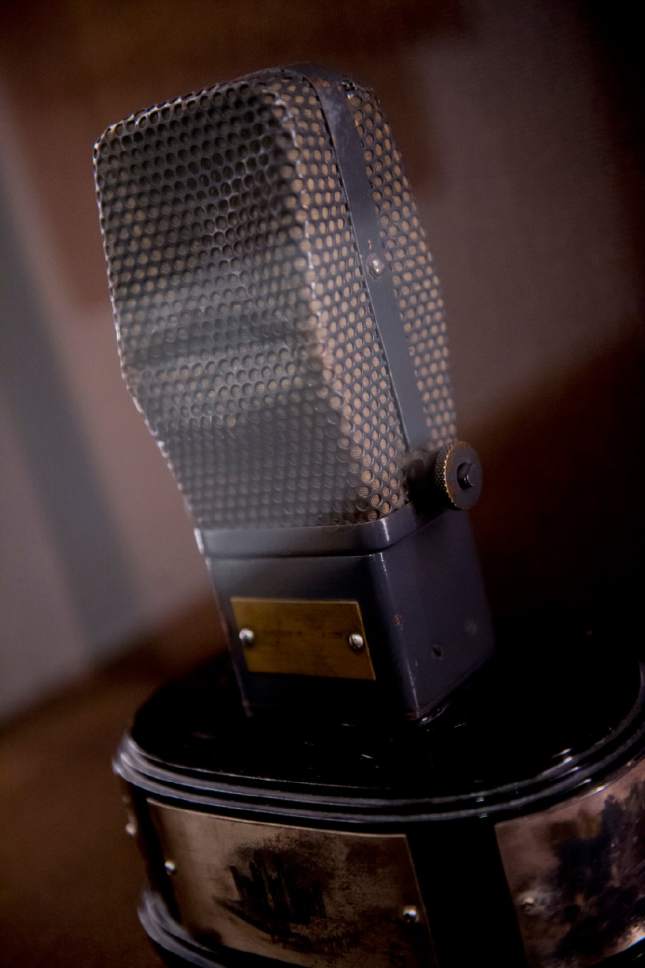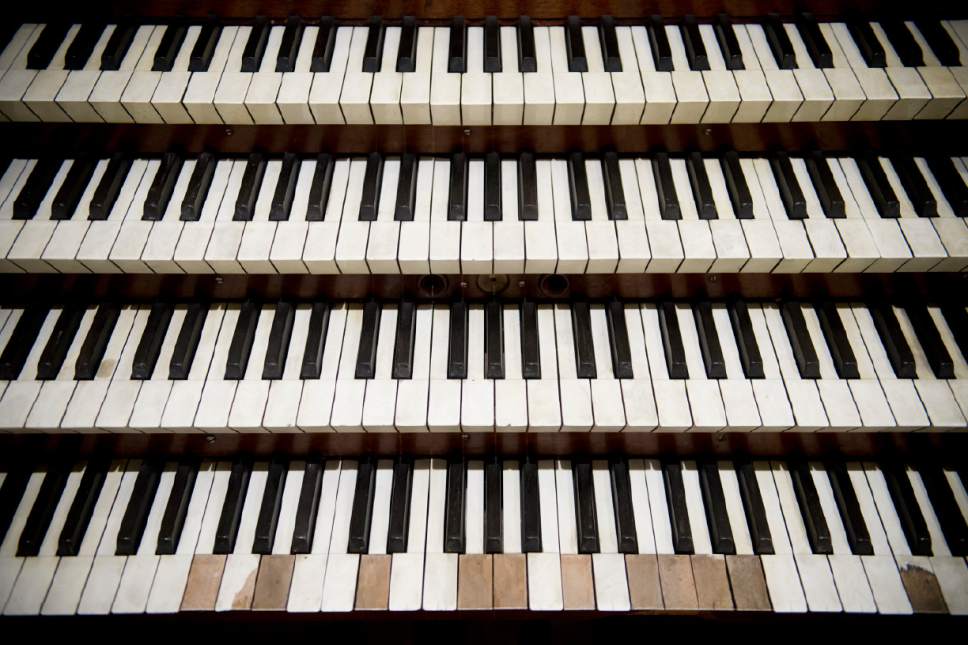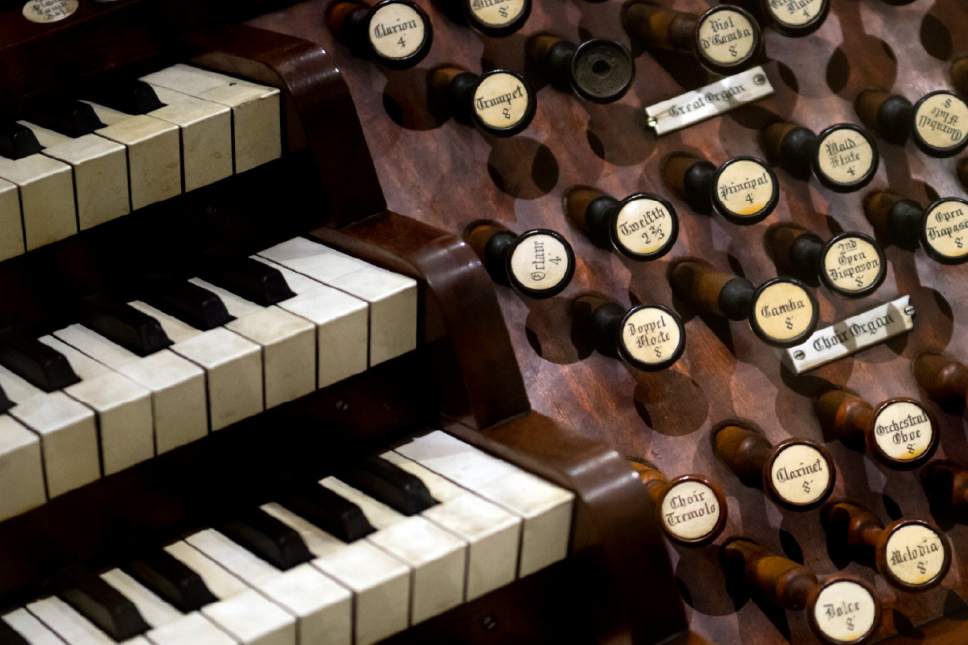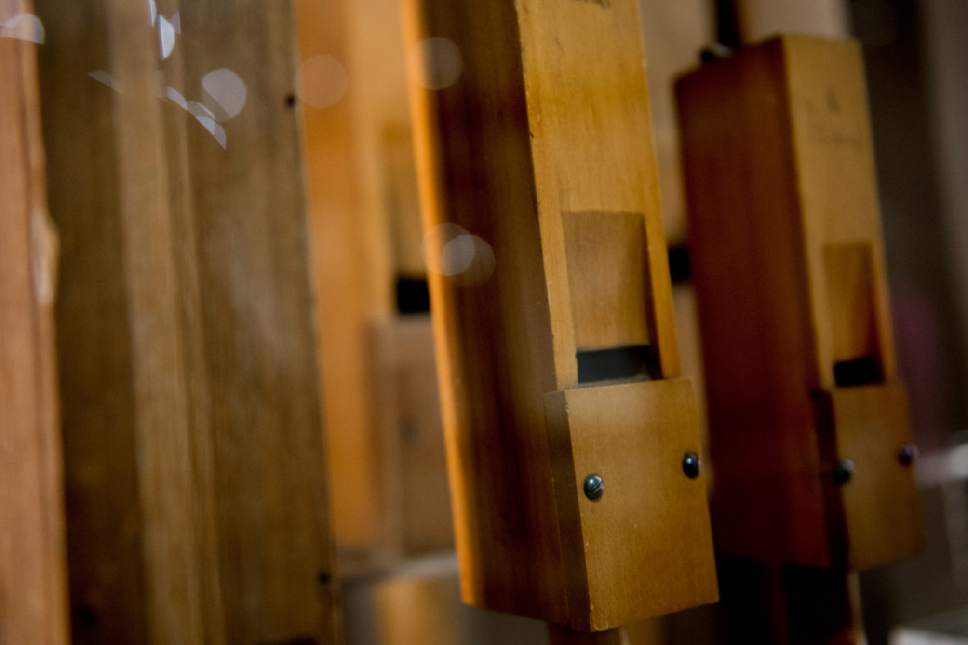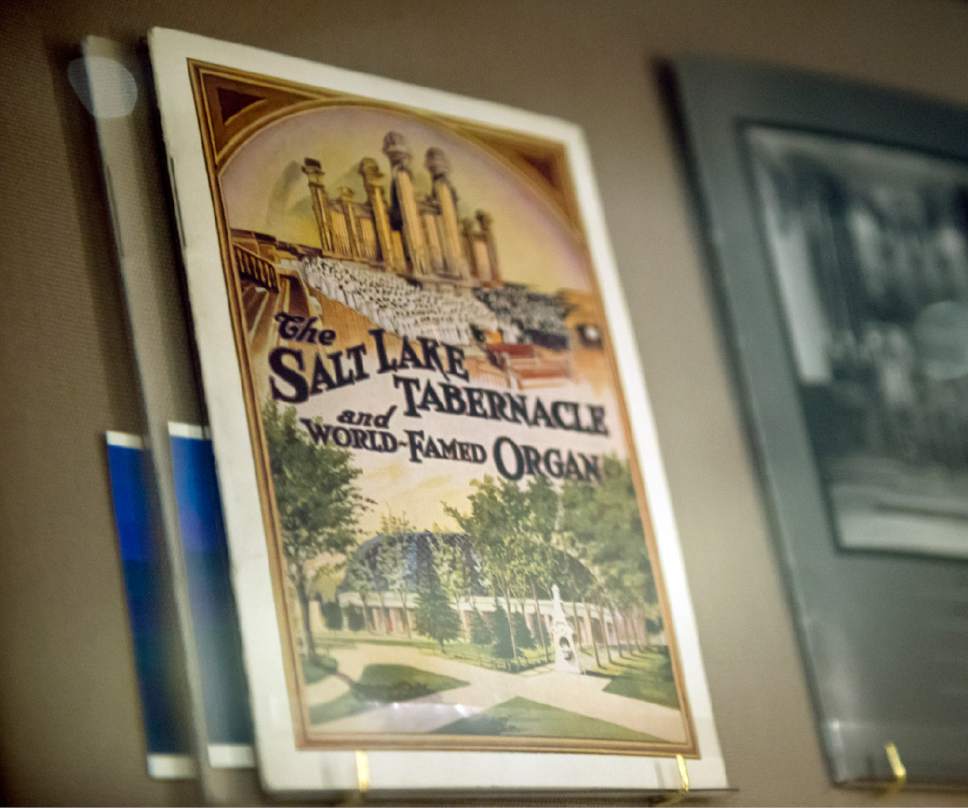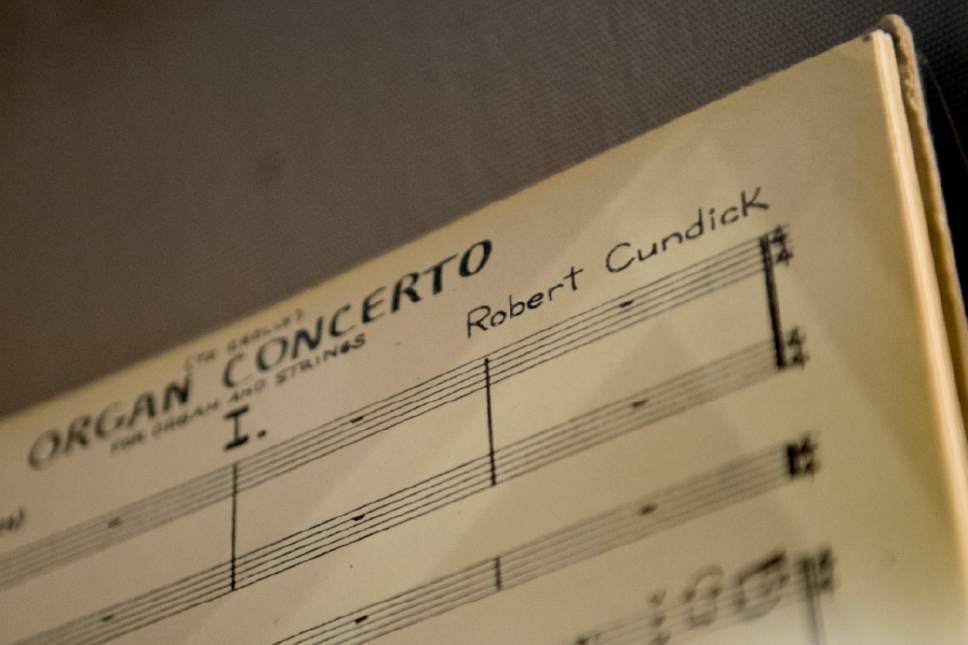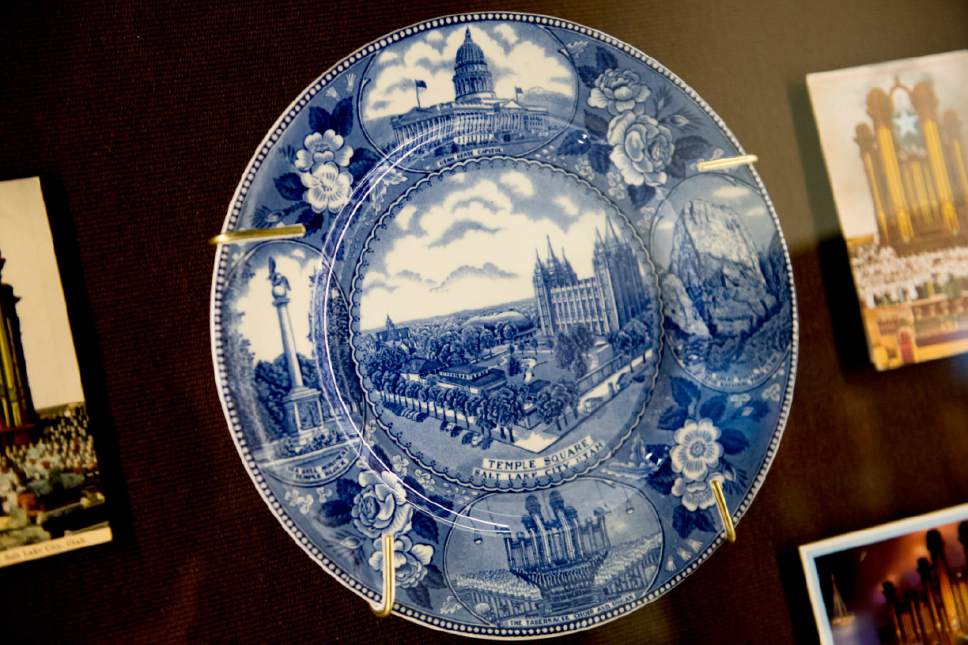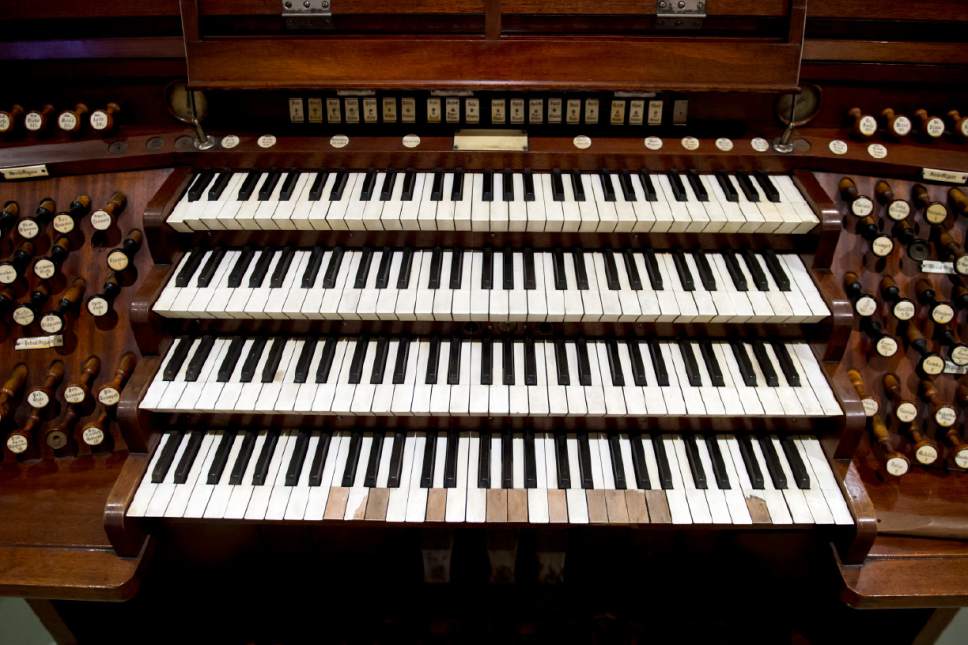This is an archived article that was published on sltrib.com in 2017, and information in the article may be outdated. It is provided only for personal research purposes and may not be reprinted.
One of Mormonism's most famous figures turns 150 this year.
The Salt Lake Tabernacle Organ — arguably overshadowed only by the neighboring Salt Lake Temple as a symbol of The Church of Jesus Christ of Latter-day Saints — is being celebrated in an exhibit in the LDS Church History Museum across the street.
A timeline that dominates one wall of the exhibit outlines the organ's evolution from the 700-pipe instrument that made its debut at the faith's October 1867 General Conference to the 11,623-pipe edition that has been in place since 1988. A companion timeline of major national and world events lends historical context.
Many of pioneer builder Joseph Ridges' original pipes, including 10 of the massive gold-leafed pine façade pipes, are still in use. But as the timeline shows, the organ has gone through four incarnations. Ridges' instrument was rebuilt by the Chicago firm of W.W. Kimball in 1901. Mechanical problems with the Kimball necessitated the building of a third Tabernacle organ by the Austin Organ Co. beginning in 1915; improvements and expansion of the Austin continued through 1940. A tonal revamping of that organ eventually resulted in an entirely new instrument: the Aeolian-Skinner organ, completed in 1948 and renovated between 1984 and 1988. That's the one that plays in the Tabernacle today.
The console of the Kimball organ stands in the center of the current exhibit, next to a demonstration organ on loan from the Tabernacle. Built in 1990, the small instrument shows visitors the "tracker action" that connected Ridges' keyboard to the pipes. Visitors power this organ with a bellows, but for much of its lifetime, the original Tabernacle organ used hydraulic power. In putting together this exhibit, creative consultant Harry Cross said, museum staff definitively debunked the legend that the water that powered the bellows came from City Creek. (Today's model is powered by electricity.)
Staffers also were surprised to learn that two women, Esther R. Bacon and Katherine Romney Stewart, served as Tabernacle organists in the late 19th century. (Two current members of the staff, Bonnie Goodliffe and Linda Margetts, had been thought to be the first women to hold that position.) Stewart even accompanied the Mormon Tabernacle Choir at an 1893 eisteddfod, or Welsh singing competition, at the Chicago World's Fair, where the choir placed second. Her purse is displayed in the exhibit along with memorabilia from other organists of the past, including Alexander Schreiner's shoes, John Longhurst's cuff links and Robert Cundick's glasses.
Also included in the exhibit are Ridges' saw, calipers and other tools; some of his original pipes; a commemorative pin from the 2002 Winter Olympics; a cane fashioned from one of Ridges' stops; and a collection representing the variety of recording technologies that have taken the organ's music around the world. Visitors can learn more — and hear the celebrated instrument in action — by watching a selection of videos featuring current organists Richard Elliott, Clay Christiansen, Andrew Unsworth, Goodliffe and Margetts.
It's remarkable that Mormon pioneers would decide to build one of the world's most complicated instruments in the remote American West before the completion of the transcontinental railroad, museum educator Stacie Lusk said. Team leader Tiffany Bowles, a great-great-great-granddaughter of Joseph Ridges, grew up hearing stories about the construction, "but I didn't realize, really, what that meant, what an incredible feat it was — just how unlikely it was that it worked out the way it did," she said.
Museum staff put together the exhibit in about eight months. That's a short time frame for such an undertaking, but as Bowles noted, the scope of the project grew along with curators' enthusiasm.
"A lot of the team members hear the organ in the Tabernacle or Conference Center at least twice a year, some of us all our lives, but we never listen to the organ," Lusk said. "Not only has it become iconic, but organ music's influence in Mormon culture, in Mormon music, in Mormon worship has come to all of us a bit more strongly.
"We're not necessarily aware of it because it's always there." —
See it …
"The Salt Lake Tabernacle Organ: Celebrating 150 Years" is on show at the LDS Church History Museum through April 17.
Where • 45 N. West Temple, Salt Lake City
When • Open daily except Sundays; history.lds.org/story/museum/tabernacle-organ-exhibit
… and hear it
The Mormon Tabernacle Choir and Orchestra at Temple Square will perform a gala program for the American Guild of Organists convention, which is in town through Thursday. Principal organist Richard Elliott will perform Alexandre Guilmant's Second Symphony with the orchestra; he and fellow Tabernacle organists Clay Christiansen and Andrew Unsworth also will be featured on other selections with the choir and orchestra.
When • Tuesday, 7:30 p.m.
Where • Salt Lake LDS Tabernacle, 50 N. Main
Tickets • Free; mormontabernaclechoir.org


